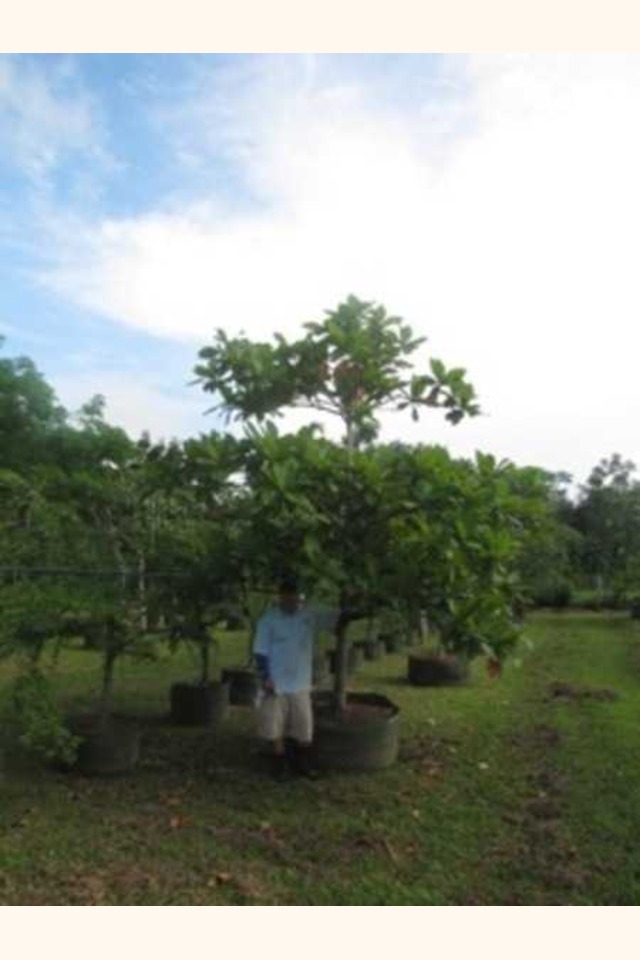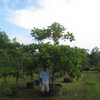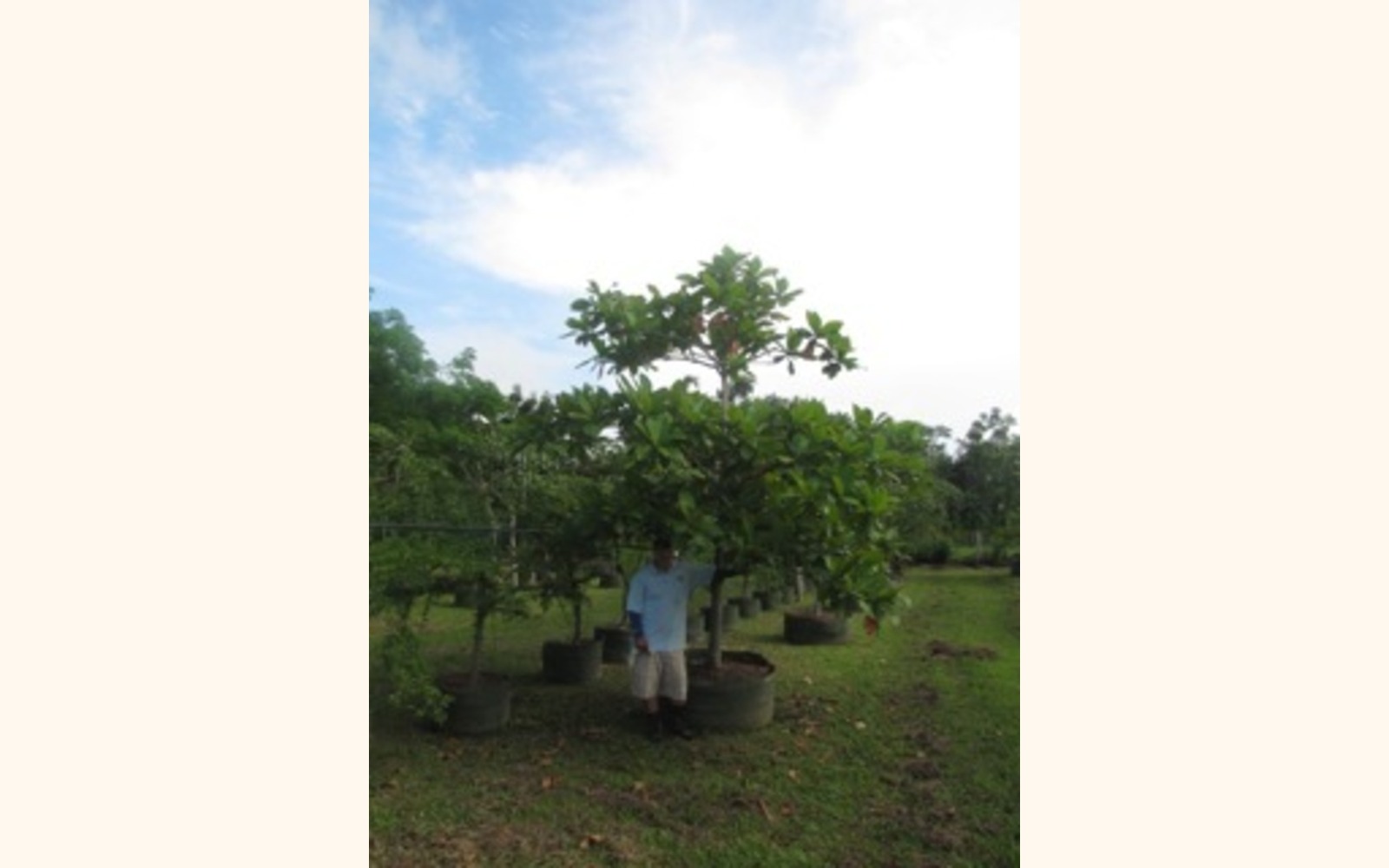

Plants > Ornamental & Shade Trees > Almendro de playa
Almendro de playa , Beach almond, Bengal almond
Native to the tropical regions of Asia, Africa, and Australia the Beach almond is widely grown in the tropical regions of the world as ornamental tree. It is valued for its deep shade it provides through its large leaves.
The fruit is edible, tasting slightly acidic.
As the tree gets older, its crown becomes more flattened to form a spreading, vase shape. Its branches are distinctively arranged in tiers giving it a unique look. During the dry season the leaves loose their leaves and in the process change from pinkish red and yellowish brown adding another interesting color element to the landscape.
The wood is red and solid, and has high water resistance.
Plant Characteristics
Leaves
The leaves are broad, glossy dark green and leathery . They range from la 15- 25 cm long and 10-14 cm wide.
Fruit
corky, light fruit that are dispersed by water. The seed within the fruit is edible when fully ripe, tasting almost like almond.It changes from green to yellow to red when finally ripe.
Flowers
The flowers are male and female,both small and inconspicuous 1 cm wide petal less. The color ranges from white to green.
Additional Information
Benefits | Desirability
The leaves contain several flavonoids (such askaempferol or quercetin), several tannins (such aspunicalin, punicalagin or tercatin), saponines andphytosterols. Due to this chemical richness, the leaves (and the bark) are used in different herbal medicines for various purposes. For instance inTaiwan, fallen leaves are used as an herb to treatliver diseases. In Suriname, a tisane made from the leaves is prescribed against dysentery and diarrhea. The leaves may contain agents for prevention ofcancers (although they have no demonstrated anticarcinogenic properties) and antioxidants, as well as anticlastogenic characteristics. Extracts of T. catappa have shown activity against Plasmodium falciparum chloroquine (CQ)-resistant (FcB1) and CQ-sensitive (HB3) strains.[2]
Keeping the leaves in an aquarium may lower the pH and heavy metal content of the water.[citation needed]It has been used in this way by fish breeders for many years, and is active against some parasites and bacterial pathogens.[3] It is also believed to help prevent fungus forming on the eggs of the fish.[citation needed]
The wood has been used in Polynesia for making canoes.
References
http://en.wikipedia.org/wiki/Terminalia_catappa














